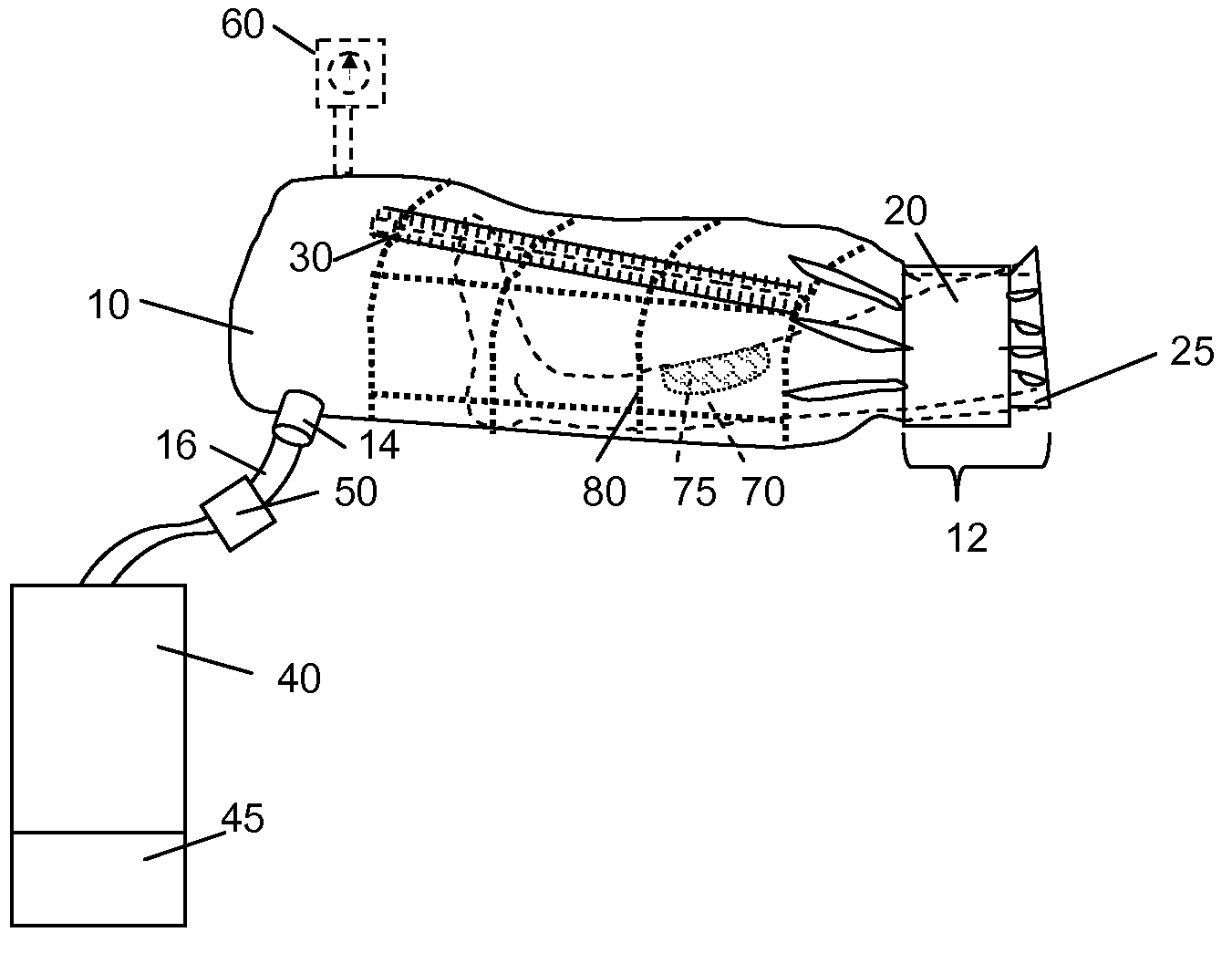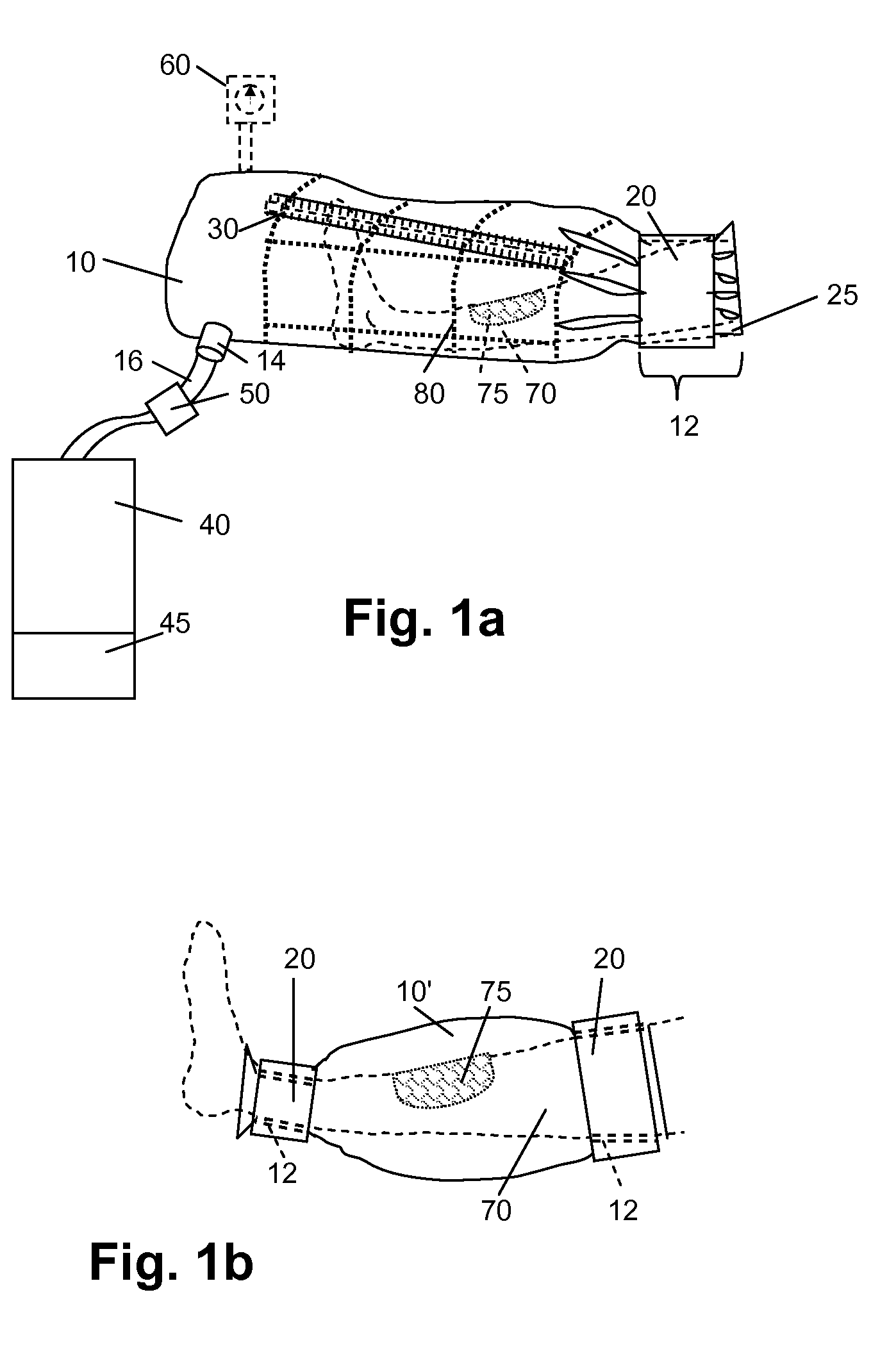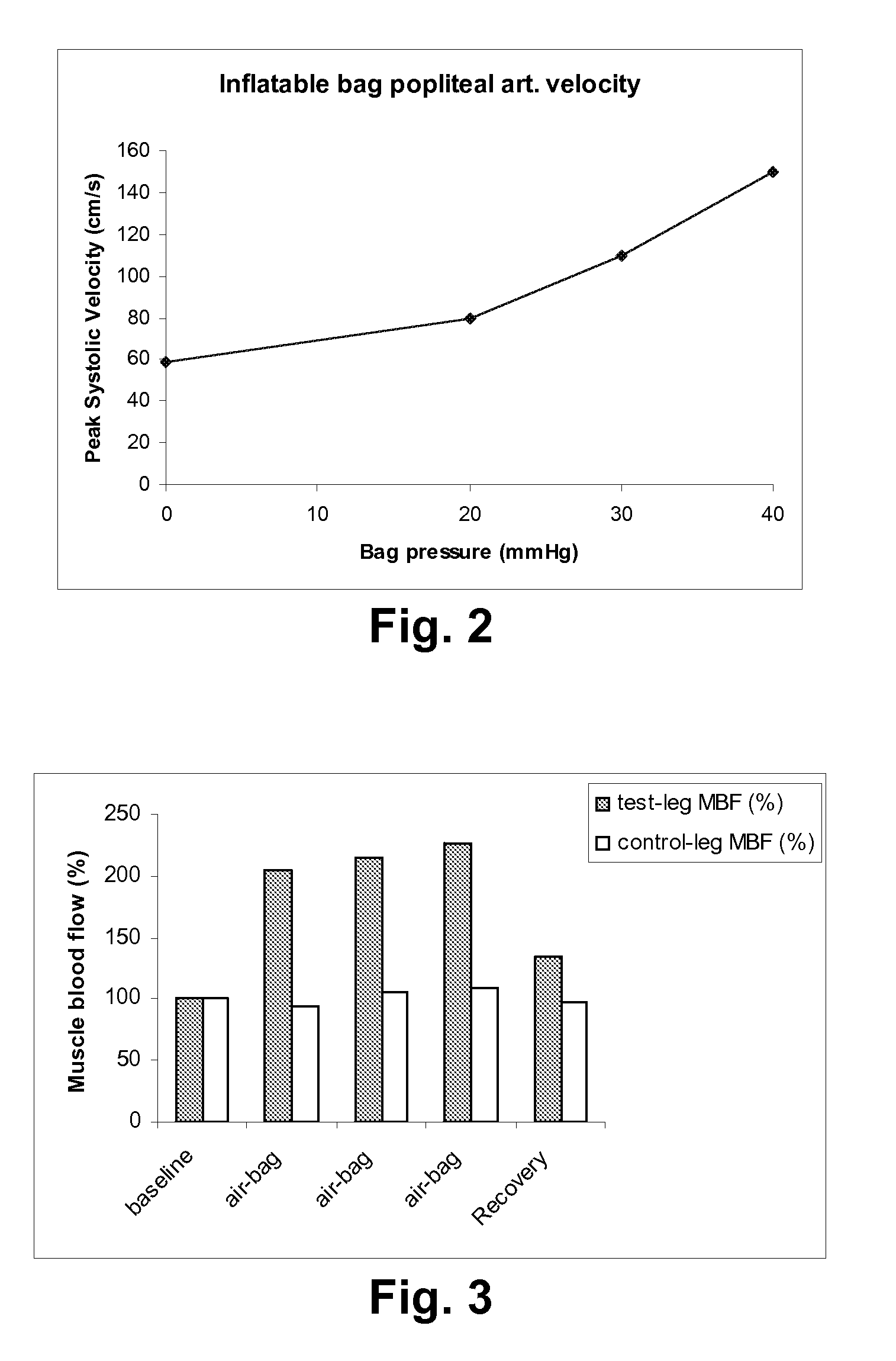Method and Apparatus for Increasing Blood Flow in a Body Part
a technology of blood flow and body parts, applied in the field of methods and apparatus for increasing blood flow to a body part, can solve the problems of slow tissue healing, amputation of the affected limb, slow healing, etc., and achieve the effects of enhancing microvascular flow, enhancing microvascular flow, and easy application and removal
- Summary
- Abstract
- Description
- Claims
- Application Information
AI Technical Summary
Benefits of technology
Problems solved by technology
Method used
Image
Examples
example 1
[0043]The leg of a volunteer was inserted into a bag, sealed using a conventional blood pressure cuff, and pressurized to 40 mmHg. The bag was formed from HDPE sheeting, sealed to be substantially airtight. (A Neoprene®sleeve covered by plastic sheeting was also tried and was found easier to apply.) Air tubing was connected between a port formed in the bag and an air pump. The bag was not in contact with the skin. Baseline blood flows were measured using photoplethysmography and Doppler ultrasound. Once the desired pressure level was attained, periodic measurements were taken after which pressurization was terminated and the bag allowed to deflate.
[0044]The device was found to increase the large artery inflow to the leg—the popliteal artery peak systolic velocity is increased by about 140%, compared to about 20-25% with existing devices. Pressure treatment increased microvascular skin blood flow in the leg; increased microvascular muscle blood flow in the leg; and modulated extremit...
PUM
 Login to View More
Login to View More Abstract
Description
Claims
Application Information
 Login to View More
Login to View More - R&D
- Intellectual Property
- Life Sciences
- Materials
- Tech Scout
- Unparalleled Data Quality
- Higher Quality Content
- 60% Fewer Hallucinations
Browse by: Latest US Patents, China's latest patents, Technical Efficacy Thesaurus, Application Domain, Technology Topic, Popular Technical Reports.
© 2025 PatSnap. All rights reserved.Legal|Privacy policy|Modern Slavery Act Transparency Statement|Sitemap|About US| Contact US: help@patsnap.com



